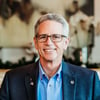
It’s 2020 - a year we will never forget. The Coronavirus pandemic is unprecedented in its economic and social impacts. We’ve seen nothing like it and hope to never see it again. And now that we are in this and expecting to soon get on the other side of this, many questions surround what the new normal is going to look like.
While the social impact of this event has caused most of America to “shelter-in-place,” the economic impact has disrupted supply chains, slowed, stalled or stopped businesses, created layoffs, furloughs and pay cuts. Consumer spending is slowing, demand is softening, and the continued impact will be felt for months to come. Nothing like it? But wait, let’s pause and turn the clock back to 2008/2009 when we endured a bit of disruption caused by the Stock Market Crash of 2008 followed by the housing market collapse. For many businesses, it created a 25% reduction almost overnight in revenue which resulted in layoffs, pay cuts, disrupted supply chains, foreclosures and bankruptcies with ripple effects that lasted for months. So, we got hit in 2008 and now 12 years later, we got hit again. The question is, did we learn from 2008 and adjust our businesses to weather through disruption events? Or did we return to business as usual, enjoy the gains and financial prosperity of the last few years and then see it wiped away in a month? Did we move forward in 2008? How are we going to move forward from 2020? Have we done anything to get better at getting better?
Many organizations are structured around operations, finance, and sales. Sales creates and brings in the demand, operations processes that demand (products and services) and finance takes care of the money. Then there are external pressures applied that drive the need for improved efficiency, throughput, quality and cost reductions to name a few. To address this pressure, many have applied continuous improvement efforts. In the context of the Lean methodology, continuous improvement seeks to improve every process in your company by focusing on enhancing the activities that generate the most value for your customer while removing as many waste activities as possible. For the most part, this has been a focus on operations to include 5S workplace organization, process flow, facility layouts, quality, inventory control and a focus on workforce and skills development. These are all good activities that can have a significant impact. Since 2008, there has been much effort applied; through that application did you get better at getting better? Did the continuous improvement efforts take hold and drive improvement? Or did things level back out around sales, operations, and finance? How did that prepare you for the COVID-19 crisis or did it feel a lot like 2008? And if 2020 feels a lot like 2008, what do we do now? How do we move forward knowing that business has cycles and this is going to come again in some shape or form? Is there a new normal? Is there a better way?
There is an enduring approach to organizational performance that has been around since the 1980s. It has proven its value and can be applied today to create and sustain that same value. So it’s not really new but can certainly be something new. I’m talking about the Baldrige Excellence Framework.
The Framework is internationally recognized to drive improvement, performance and innovation. Seven critical aspects of managing and performing as an organization are included. This approach is more comprehensive than our traditional focus on operations, finance and sales or even continuous improvement. The Framework asks us to explore our strengths and opportunities for improvement in seven categories:
- Leadership – How do Senior Leaders’ personal actions and responsibilities and the organizations governance system guide and sustain the organization to build success now and into the future?
- Strategy – How do organizations develop strategic objectives and action plans, implement them, change them if required and measure progress?
- Customers – How do organizations engage customers for long-term success, listen to customers, serve, and exceed expectations and build customer relationships.
- Workforce – What workforce practices are utilized that create and maintain a high-performance environment and engage your workforce to enable it and your organization to adapt to change and succeed?
- Operations – How do you focus on your organization’s work, product design and delivery, innovation, and operational effectiveness to achieve success now in the future?
- Measurement & Results - How do you measure, analyze, and improve organizational performance to align your operation with strategic objectives?
Baldrige will further ask the following:
- Approach - What is your approach in each of these areas?
- Deployment - How is that approach being deployed? Is it aligned, effective and systematic? How do you know?
- Learning – What new knowledge or skills have been acquired or learned that has improved the approach? How do you know you’ve gotten better? Is it a fact-based systematic manner with evidence of organizational learning?
- Integration – Has the organization achieved a state of consistency and harmonization of all the individual components of a performance management system that operates as a fully interconnected unit.
Baldrige demands a holistic view of the organization, requiring alignment across all areas. It engages the entire leadership team to collaborate and cooperate through a strategy focused approach. This puts organizations in a position to succeed and accomplish their mission. It trickles down to impact employees at all levels and drives a new, forward thinking culture of stronger employee engagement. It goes beyond the sales, operations, and/or finance models and surpasses them while embracing continuous improvement. It not only can develop an organization to establish a level of consistent performance, but also build a foundation that will weather the toughest of times. The Baldrige Excellence Framework is best in class. It’s a world-class tool that’s been around for many years and can be the new tool your organization uses to help build your new normal and a culture of getting better at getting better!
Get in touch with IMEC for more information on the Baldrige Framework and how you can apply it to your organization.




